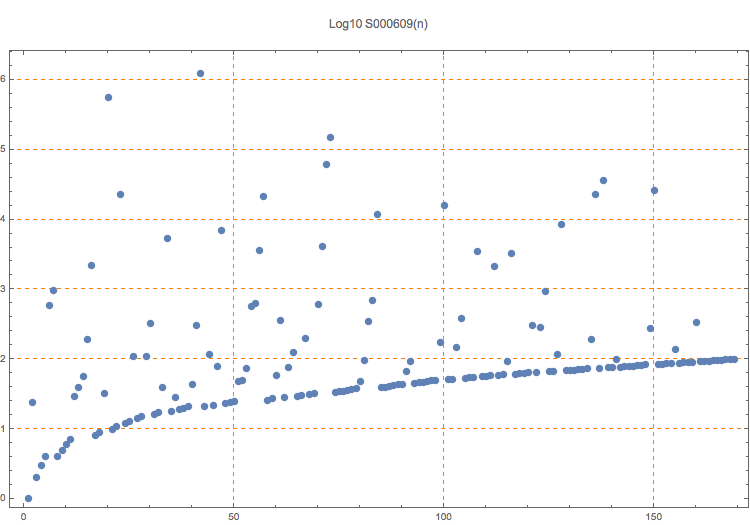Irregular table of numbers k such that the sum of the squares of n to k is a square.
1, 24, 2, 3, 4, 580, 963, 4, 5, 6, 7, 29, 39, 56, 190, 2215, 8, 9, 32, 552057, 10, 11, 22908, 12, 13, 108, 14, 15, 111, 326, 16, 17, 39, 5345, 18, 28, 19, 20, 21, 43, 308, 1221044, 21, 116, 22, 80, 6910, 23, 24, 25, 48, 50, 73, 578, 624, 3625, 21624, 26, 27
1
Row n starts with n because n^2 is a square. This comes from Table III of the Bremner et al. paper. See S000608 for a slightly different presenation of these results. Sequence A180442 lists the rows that have more than one term.
T. D. Noe, Plot of 100 rows
T. D. Noe, Table of 100 rows
A. Bremner, R. J. Stroeker, and N. Tzanakis, On Sums of Consecutive Squares, J. Number Theory 62 (1997), 39-70.
(Mma) PerfectSquareQ[n_] := JacobiSymbol[n, 13] =!= -1 && JacobiSymbol[n, 19] =!= -1 && JacobiSymbol[n, 17] =!= -1 && JacobiSymbol[n, 23] =!= -1 && IntegerQ[Sqrt[n]]; g[m0_, m1_] := (1 - m0 + m1) (-m0 + 2 m0^2 + m1 + 2 m0 m1 + 2 m1^2)/6; Table[Select[Range[0, 2000000], PerfectSquareQ[g[n, # + n]] &] + n, {n, 100}]
nonn,tabf
T. D. Noe, Apr 28 2015
